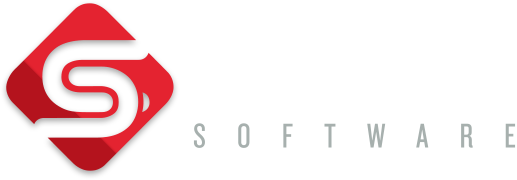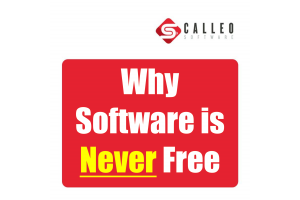No software is entirely free, no matter how small the license cost. In fact, free software products often end up costing the most in the long run. But there is an easy way to reduce your costs.
Companies and procurement always want to get the best price for anything they buy. Software is no exception. Often though, they focus on the ticket price of software, rather than the combined operational costs and effort.
When selecting software, you need to factor in the total cost of ownership.
Calleo has been supplying customers with software for many years. During this time, we’ve helped many companies develop ROI calculations, so they can understand the budgetary impact of software purchases.
What we’ve found, time and again, is that companies underestimate the costs associated with certain tools.
While most companies are acutely aware of software prices, they’re often in the dark when it comes to operating costs.
Take open source tools as an example. While they have zero ticket prices, they generally cost more overall.
Open source tools take more effort and time, include no professional support, and rely heavily on expensive expert resources.
Fortunately, though, modern SaaS solutions provide an easy way to reduce software overheads.
The Overheads of On-Premises Software
Of course, it’s not just open source tools that incur hidden costs. All on-premises software carries a budgetary overhead, often quite a high one.
Whenever you deploy any software on-site, you must:
- Provision the right kit
- Replace that kit when it reaches end of life
- Install and configure it
- Maintain and patch the server(s)
- Upgrade it for major and minor releases
- Provide security and backup
- Build disaster recovery
- The list goes on…
Again, open-source tools are a good example – Zero ticket price, but high overheads.
Once you select an open-source tool, you’ll likely need to add plug-ins, develop custom code, and integrate with other tools. Plus, there’s hosting, patching and regular upgrades. And without professional support, who do you turn to when things go wrong?
All this needs to be factored into your cost of ownership.
How SaaS Helps Reduce the Total Cost of Ownership
Conversely, Software as a Service (SaaS) tools can initially appear more costly, but they end up saving you a lot of money in the long term.
SaaS solutions incur an ongoing cost, but you get a lot of bang for your buck. SaaS removes many of the costs associated with traditional on-premises software.
Some of the reasons why you save money with SaaS Software include:
- You don’t need to provision kit or replace it
- There’s no installation
- You don’t need to deploy SaaS Software
- There’s zero maintenance for hardware or software
- Upgrades and patches are done for you
- Disaster recovery is built-in
- The list goes on…
Plus, SaaS test tools are quick to buy and get started. Your software can be made available in days, fully functional and ready-to-go.
SaaS Example – How You Can Save Time and Money With LoadRunner Cloud
Let’s take LoadRunner Cloud as an example. This is a class-leading, SaaS software performance test tool.
Traditionally, performance tests are very labour intensive and costly to run. Especially in the set-up and configuration.
Not only do performance tests require client machines, and skilled resources to create the tests, they also need substantial load generating infrastructure.
This infrastructure must be provisioned, the software installed and configured, and then someone must own and maintain it. Then of course, you must upgrade the various components whenever a new release comes out.
With LoadRunner Cloud though:
- You access the tool via the web interface and you’re good to go
- All the infrastructure is provided online
- Your software is always up-to-date
- The total cost of ownership is greatly reduced
For a great example of your potential savings, check out this JMeter v. LoadRunner Cloud Comparison
Software is Never Free, But SaaS Can Reduce Your Costs
On-premises software carries substantial and unavoidable overheads, but SaaS can reduce the total cost of ownership.
SaaS is becoming the dominant software licensing option for most companies.
It’s a modern solution that saves time and effort. These days, most software is available via SaaS. Providing companies with a solution with:
- Rapid and simple deployment
- Known costs no hidden costs
- No long term commitment
- Revenue costs (Opex) cost rather than Capital Cost (CapEx)
- No in-house IT resource requirements
Not only that, but the SaaS typically works cheaper over 3 years than equivalent on-premises solutions. Tools like LoadRunner Cloud will save you time and money, even when compared to free open-source software.

















